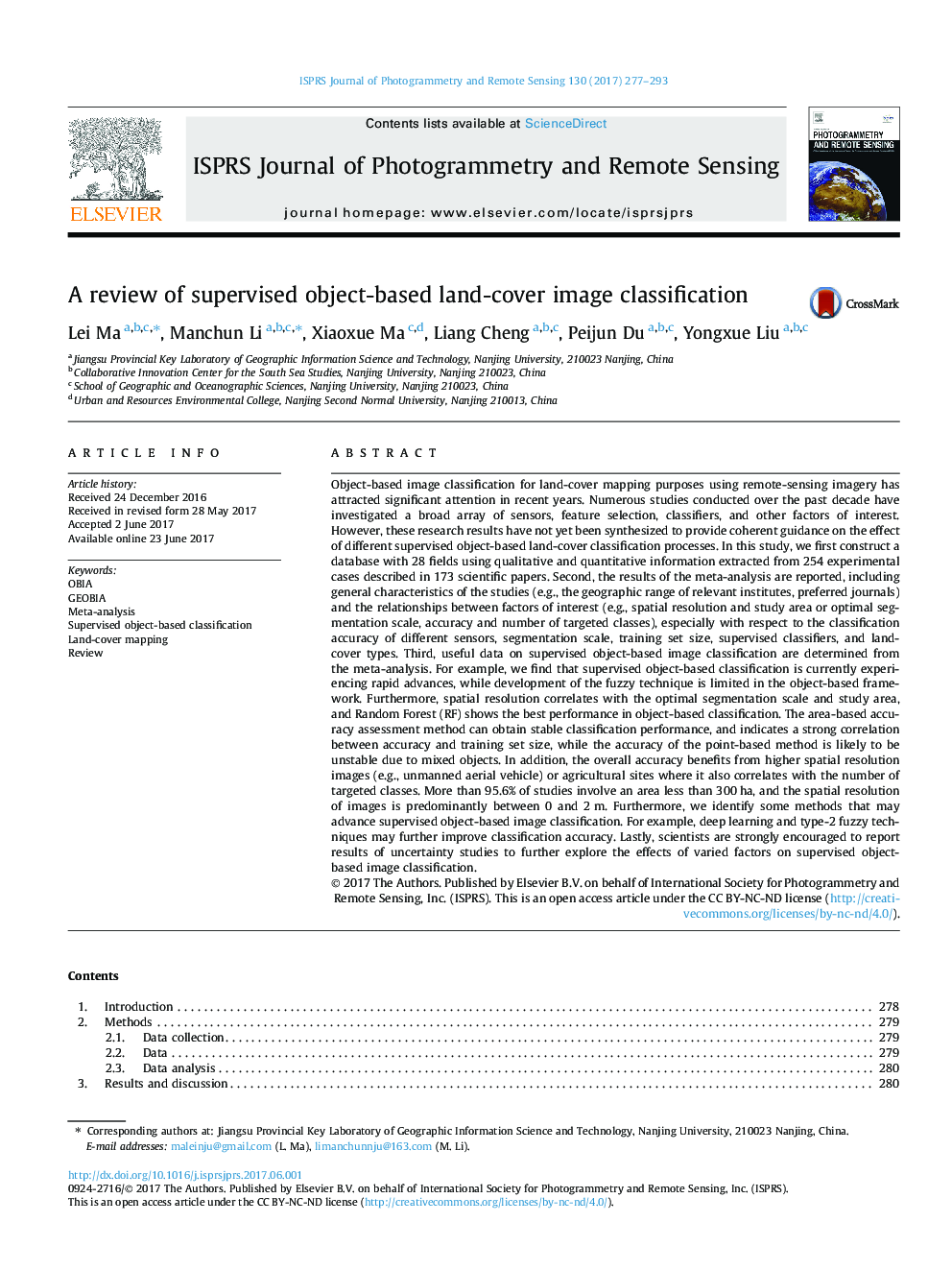| کد مقاله | کد نشریه | سال انتشار | مقاله انگلیسی | نسخه تمام متن |
|---|---|---|---|---|
| 4972810 | 1451244 | 2017 | 17 صفحه PDF | دانلود رایگان |
Object-based image classification for land-cover mapping purposes using remote-sensing imagery has attracted significant attention in recent years. Numerous studies conducted over the past decade have investigated a broad array of sensors, feature selection, classifiers, and other factors of interest. However, these research results have not yet been synthesized to provide coherent guidance on the effect of different supervised object-based land-cover classification processes. In this study, we first construct a database with 28 fields using qualitative and quantitative information extracted from 254 experimental cases described in 173 scientific papers. Second, the results of the meta-analysis are reported, including general characteristics of the studies (e.g., the geographic range of relevant institutes, preferred journals) and the relationships between factors of interest (e.g., spatial resolution and study area or optimal segmentation scale, accuracy and number of targeted classes), especially with respect to the classification accuracy of different sensors, segmentation scale, training set size, supervised classifiers, and land-cover types. Third, useful data on supervised object-based image classification are determined from the meta-analysis. For example, we find that supervised object-based classification is currently experiencing rapid advances, while development of the fuzzy technique is limited in the object-based framework. Furthermore, spatial resolution correlates with the optimal segmentation scale and study area, and Random Forest (RF) shows the best performance in object-based classification. The area-based accuracy assessment method can obtain stable classification performance, and indicates a strong correlation between accuracy and training set size, while the accuracy of the point-based method is likely to be unstable due to mixed objects. In addition, the overall accuracy benefits from higher spatial resolution images (e.g., unmanned aerial vehicle) or agricultural sites where it also correlates with the number of targeted classes. More than 95.6% of studies involve an area less than 300Â ha, and the spatial resolution of images is predominantly between 0 and 2Â m. Furthermore, we identify some methods that may advance supervised object-based image classification. For example, deep learning and type-2 fuzzy techniques may further improve classification accuracy. Lastly, scientists are strongly encouraged to report results of uncertainty studies to further explore the effects of varied factors on supervised object-based image classification.
Journal: ISPRS Journal of Photogrammetry and Remote Sensing - Volume 130, August 2017, Pages 277-293
